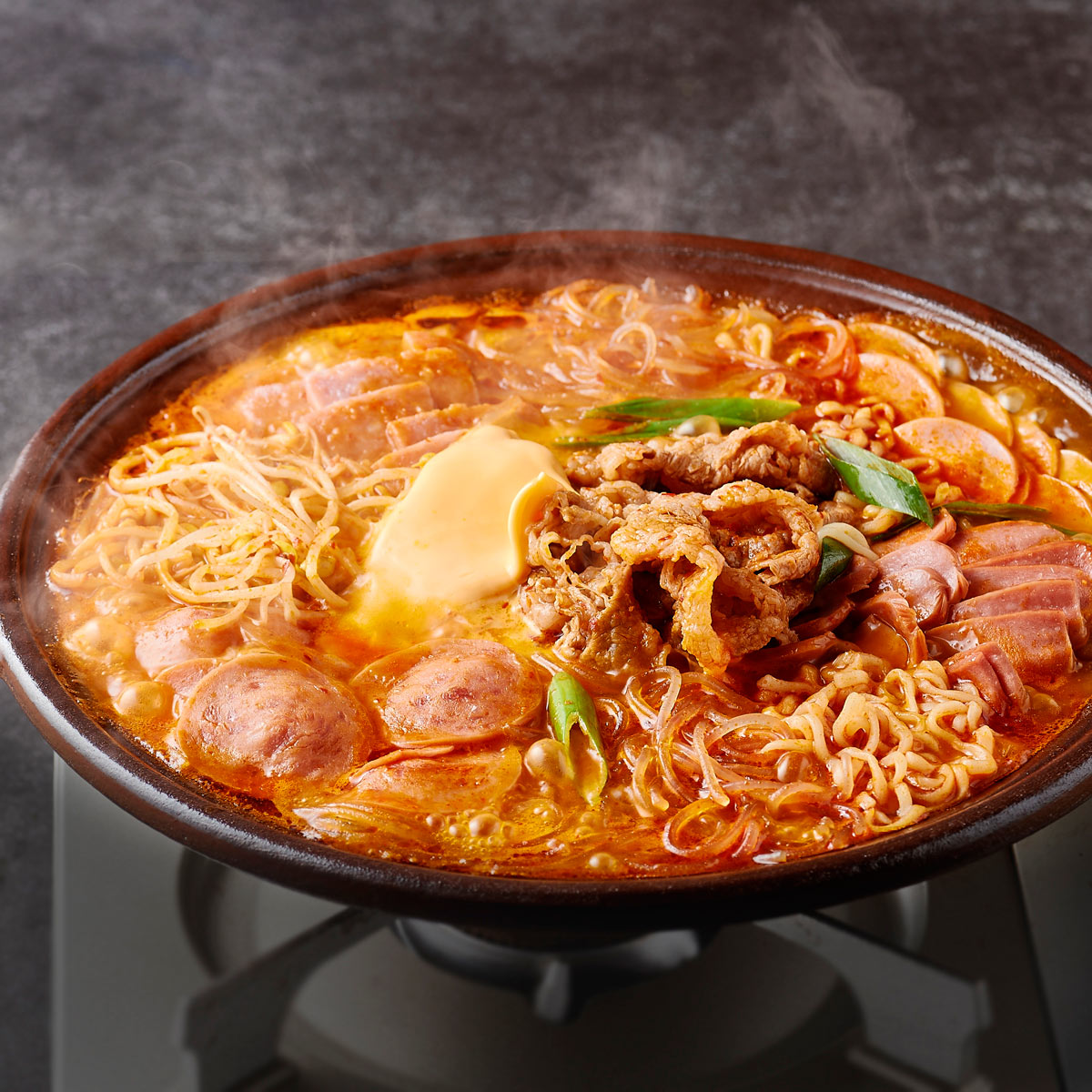Budae Jjigae (Korean Army Stew)
Budae Jjigae (Korean Army Stew)
Budae Jjigae (Korean Army Stew)has an interesting and unique origin rooted in post-war Korea. After the Korean War (1950–1953), food was scarce, and many Koreans were struggling to find sustenance. U.S. military bases in South Korea, however, had supplies like spam, sausages, baked beans, and processed cheese that were unfamiliar to Koreans but became available to them through the military.
Koreans began incorporating these ingredients into their traditional soups and stews, blending them with kimchi, tofu, and gochujang (Korean red pepper paste) to create a fusion dish. This mix of U.S. military rations and local ingredients became what is now known as **Budae Jjigae**, which directly translates to "Army Stew" (부대찌개), named after the U.S. army bases (budae).
Despite its humble beginnings, Budae Jjigae has evolved into a beloved dish, enjoyed for its hearty and spicy flavors, and it remains a popular comfort food in Korea today

Ingredients (Serves 2):
- 200g kimchi, chopped
- 100g sausage (spam or hotdogs, sliced)
- 100g tofu (cubed)
- 1/2 onion (sliced)
- 1 green onion (chopped)
- 1/2 cup baked beans
- 1/2 cup rice cakes (tteok)
- 1 package of instant noodles
- 2 cups water
- 1 tablespoon gochujang (Korean red pepper paste)
- 1 tablespoon soy sauce
- 1/2 teaspoon sugar
- 1 teaspoon garlic (minced)
- Optional: cheese, mushrooms, or canned corn for extra toppings
Instructions:
- Prepare the Base:
In a medium-sized pot, arrange the kimchi, sausage, tofu, onion, and green onion evenly across the bottom. - Add the Seasoning:
Add the gochujang, soy sauce, sugar, and garlic on top of the ingredients. - Pour the Water:
Gently pour in 2 cups of water, making sure the ingredients are mostly submerged. - Add Extra Ingredients:
Toss in the baked beans, rice cakes, and any optional toppings like mushrooms or corn. Bring the stew to a boil over medium heat. - Cook the Noodles:
Once the stew starts boiling, add the instant noodles and cook for another 3-4 minutes until the noodles soften. - Serve:
Enjoy your steaming hot Budae Jjigae straight from the pot, optionally topping with cheese for that gooey extra richness.
Heat Level
- Mild: The stew will have a gentle warmth if you use around 1/4 tablespoon of gochujang. This is ideal for those sensitive to spice.
- Moderate (as written in the recipe): The recipe calls for 1 tablespoon of gochujang, placing it in the moderately spicy range. It's equivalent to a mild jalapeño level, around 1,000 to 5,000 Scoville Heat Units (SHU).
- Hot: To make the stew spicier, you can increase the gochujang to 2 tablespoons or add gochugaru (Korean chili flakes) for an additional kick, which would elevate it to a higher spiciness.
Taste Experience:
The overall heat is balanced by the savory, umami flavors from the broth, sausage, and tofu, so while it has a definite kick, it’s not overpowering.




